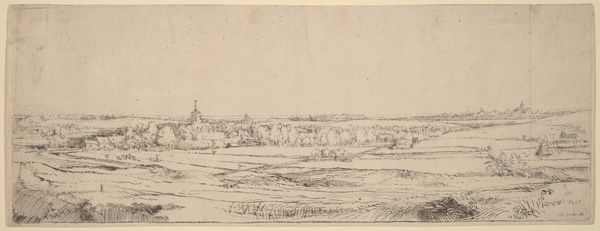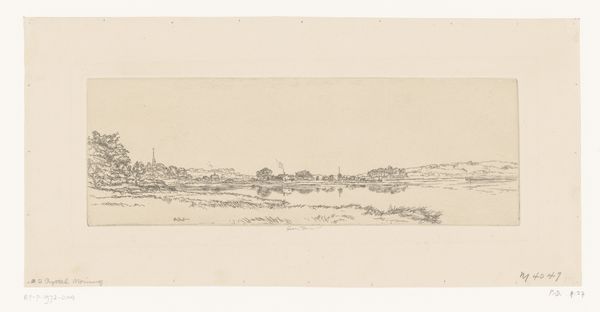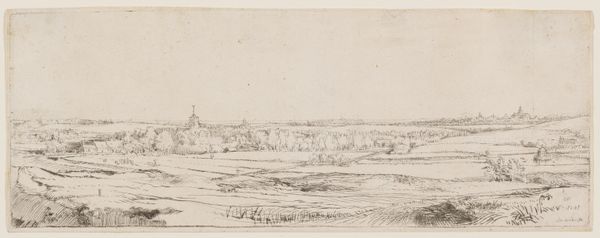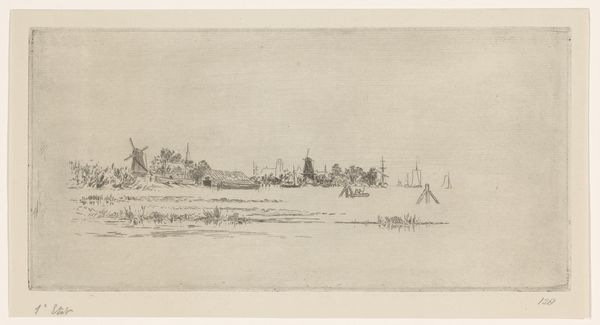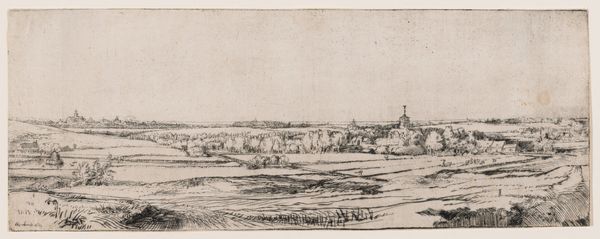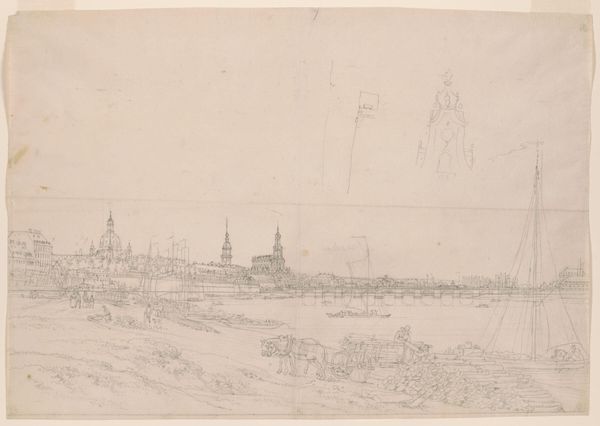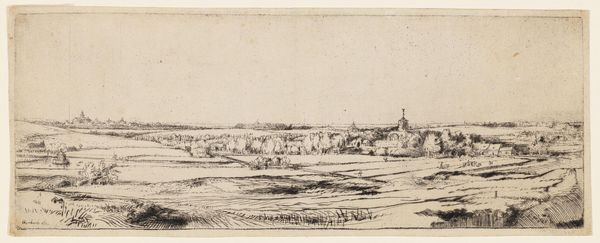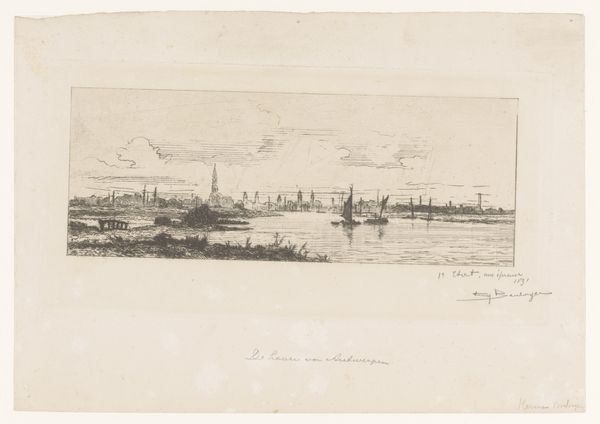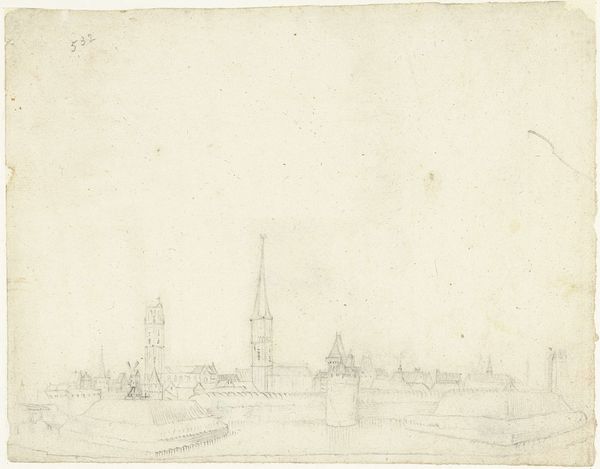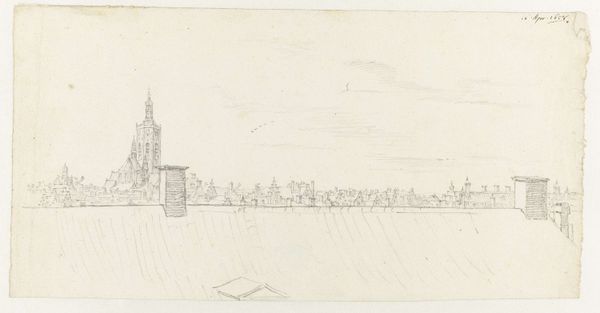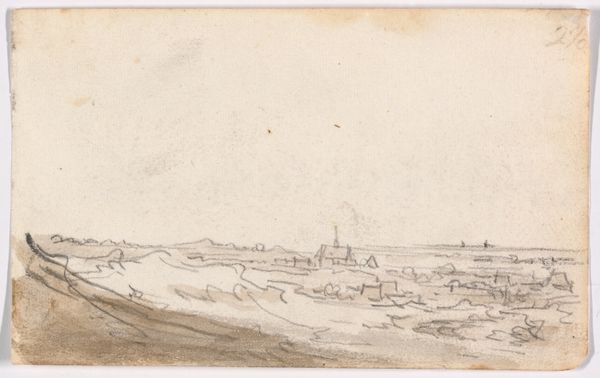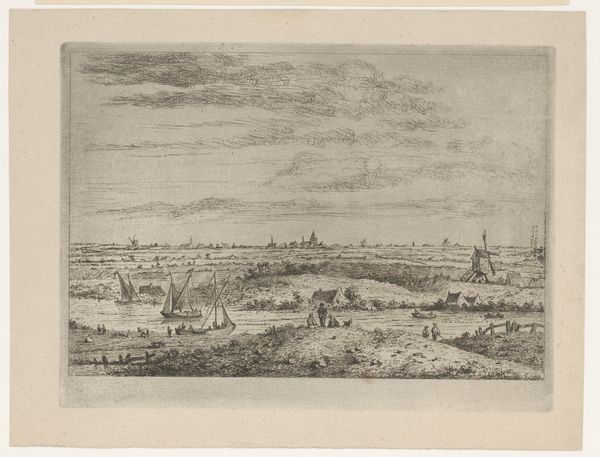
drawing, pencil
#
drawing
#
pen sketch
#
pencil sketch
#
landscape
#
pencil
#
realism
Dimensions: height 288 mm, width 419 mm
Copyright: Rijks Museum: Open Domain
Curator: This delicate pencil drawing, "Gezicht bij de Via Appia nuova," by Carel Vosmaer, was completed in 1895. Editor: My first impression is of a kind of quiet melancholy. The ruin in the foreground anchors the composition but also speaks to loss and the passage of time. Curator: Absolutely. Let's consider the context: Vosmaer, a Dutch artist, depicts the Via Appia Nuova, an ancient Roman road. Pencil as a readily available material allowed artists to rapidly capture fleeting atmospheric conditions when working en plein air. Its accessibility democratized landscape art practices at this time, connecting the means of production to the observer. Editor: I agree; the medium emphasizes a transient experience, yet the subject itself - a road, ruins - speak to something lasting. Notice the crumbling structure. It reminds us that Rome, while powerful in its history, is equally a city defined by decay, evoking layered associations of vanished empires and cultural memory. Curator: Precisely. The choice of such a significant historical site like the Via Appia highlights social context as it became more accessible to 19th century artists. There were more artist colonies and outdoor schools as interest increased for landscape observation-based art making, enabled through material advancements and shifting class structures during this time. Editor: I see it as a symbol. Consider the Via Appia itself—the “Queen of Roads” that was once bustling with the movement of armies and commerce. Now it is captured, in sketch, hinting at journeys both physical and metaphorical; connecting the then with the now and perhaps evoking more timeless, philosophical meditations on humanity itself through subtle graphic traces. Curator: It's fascinating how this drawing, executed with seemingly simple materials, reflects broader shifts in artistic practice and accessibility. We are observing not just a location, but also witnessing how new approaches to landscape as commodity began being absorbed into artist studio practices due to the expanding global art market. Editor: And, looking deeper, the very openness of the landscape carries its weight in contrast to built environment. The ruin could suggest strength, weakness, triumph or folly; a testament of Rome that is up to us to interpret on our own journey. Curator: An accessible rendering of historical awareness that opens different understandings across many layers. Thanks for adding your rich interpretative eye. Editor: It was my pleasure to examine and travel mentally on this road!
Comments
No comments
Be the first to comment and join the conversation on the ultimate creative platform.
